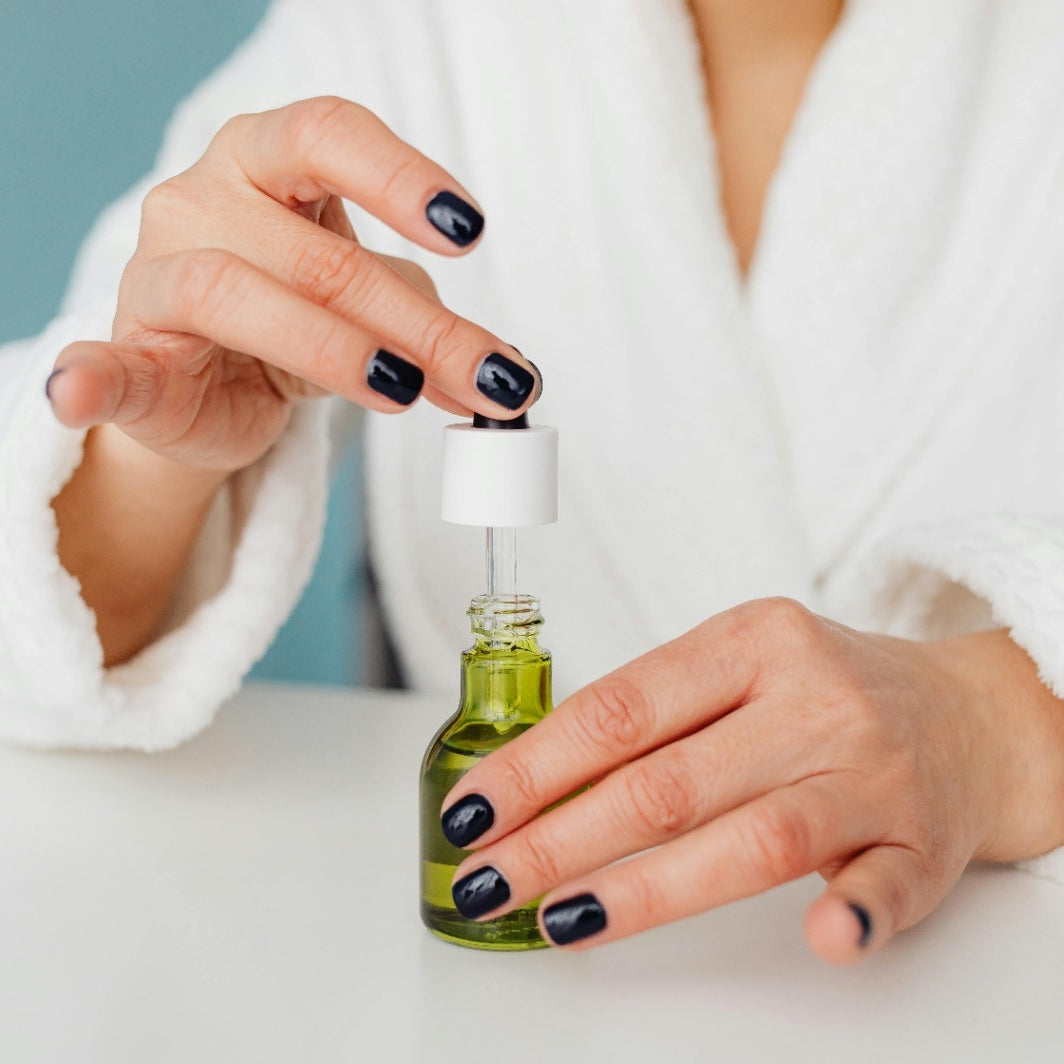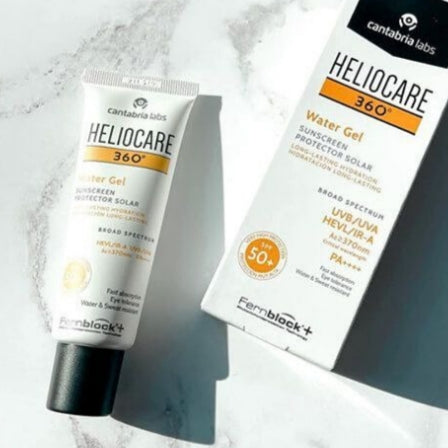You probably apply sunscreen every day, right? That’s awesome—but here’s a friendly heads-up: most of us aren’t putting enough on. Turns out, people typically apply only 20–50% of the recommended amount, cutting how well it actually protects us by a lot. (Source) No worries though—it’s an easy fix! In this post, we’ll walk through 10 sunscreen slip-ups you might be making without even realizing it—and how to correct them.
Mistake 1: Skipping Sunscreen on Cloudy or Winter Days
It’s easy to think, “Should I wear sunscreen indoors?” or on cloudy days—but UV rays don’t care about gray skies or cold. In fact, studies show that UVA rays penetrate clouds at around 89% during scattered-cloud days and still about 31% even on overcast ones (Source).
Another test found over 50% of UVA passes right through standard window glass, meaning you’re still getting exposure when you’re inside near windows or driving (Source).
For reliable, daily protection—even when it’s gloomy—grab a fast-absorbing, broad‑spectrum option. Something light and very easy to wear.
Mistake 2: Applying Too Little Sunscreen
You might think a little goes a long way, but when it comes to sunscreen, that’s not the case. Studies show that most people use just 25–50% of the recommended amount, slashing the sunscreen’s actual SPF dramatically (Source).
How much sunscreen to use?
Aim for about ½ teaspoon (≈2 mg/cm²) for your face and neck—that's roughly the size of a nickel. Apply generously, and you'll get close to the SPF number on the label, not half of it.
To make this easy, pick a sunscreen that's pleasant to use. Try Beauty of Renforcer Relief Sun SPF. It is lightweight and non-greasy, so you naturally feel happy layering it on—no greasy residue, no excuses.
Mistake 3: Not Reapplying Sunscreen During the Day
Here's the science: sunscreen doesn’t stick around forever. A clinical study found that after just one application, users had 0.43 mg/cm² of sunscreen on their skin—well below the recommended 2 mg/cm². But when they reapplied 30 minutes later, that number jumped to 0.95 mg/cm² (P = 0.002) (Source).
In plain terms, reapplying nearly doubles the product coverage, helping get you closer to the SPF printed on the bottle.
Another study showed that for non-active folks, SPF 50 lasted a full 6 hours after a single application. But as soon as you sweat or move—like during exercise—that protection drops to around SPF 30 after 6 hours, and effectiveness fades after just 2 hours of activity (Source).
Put simply: if you skip reapplying, your skin could be getting 20–50% less UV protection, and photostability alone won't save you .
Mistake 4: Applying Sunscreen After Makeup
Let’s clear this up once and for all: sunscreen goes on before makeup. If you’ve been layering it on top of your foundation, your skin isn’t getting the full protection it needs. Sunscreen works best when it’s directly on your skin, not layered over powders or creams that can block its absorption. If you’ve ever asked, “When should I apply sunscreen?”—the answer is simple: after moisturizer, before any makeup.
Here is a quick demo routine:
-
Cleanse your face
-
Toner or serum (if you use one)
-
Moisturizer
-
A lightweight sunscreen — Like BOR sun relief
-
Wait 2–3 minutes for it to absorb
-
Apply your makeup as usual
That’s it. No weird textures, no pilling, no mess.
Mistake 5: Missing Commonly Forgotten Spots
You might think you’ve nailed your sunscreen routine—but if you’re not asking how to apply sunscreen with a checklist, you’re likely leaving gaps. Studies show people miss between 9–11% of their face, especially around the eyes.
One UV-camera study with 57 participants found a median 14% of eyelid skin was left uncovered, while other parts of the face missed about 7% (Source).
In a broader study, about 13% missed their eyelids entirely (Source).
Here’s a helpful checklist of commonly forgotten spots—and why they matter:
-
Eyelids & inner eye corners – extremely thin and prone to cancer (up to 10% of skin cancers occur here)
-
Ears (tops & creases) – often exposed and missed
-
Scalp & hairline – critical if hair is thin or tied up
-
Back of neck & chest – sunburn risk and early aging signs
-
Lips – prone to dryness, sunburn, and skin cancers
-
Hands, fingers & tops of feet – exposed daily, especially while driving or walking
-
Behind knees & skin folds – these burn easily under sun angle
Mistake 6: Using Expired Sunscreen
Let’s be real—we’ve all done it. You find an old tube of sunscreen from last summer, give it a quick sniff, and think, “It should still work, right?” But here’s the truth: expired sunscreen is one of the most common and risky sunscreen mistakes you can make.
Does Sunscreen Expire?
Yes, it absolutely does. Most sunscreens are designed to stay effective for up to three years—if they’re stored properly. But heat, sunlight, and even air exposure can break down the ingredients faster. And once those protective filters degrade, you're basically applying lotion—not protection.
A 2022 study in the International Journal of Pharmaceutics found that expired sunscreens had noticeable changes in their UV filtering ability and pH stability, especially when exposed to warm environments (source).
That means using old sunscreen might give you way less protection than what the label says.
How to Check If Yours Is Expired
Check the tube or bottle for a printed expiration date—usually on the back or the bottom.
No date? If it’s over 12–18 months old, or smells odd, feels separated, or looks discolored—it’s time to toss it.
Sunscreens that have been in a hot car or beach bag? Replace them sooner.
Mistake 7: Using the Wrong Sunscreen for Your Skin Type
Not all sunscreens are created equal—and choosing the wrong one can do more harm than good. If you’ve ever ended up with breakouts, irritation, or that heavy, greasy feeling after applying SPF, chances are you’re not using the best match for your skin type.
Why It Matters
Sunscreen is something you wear daily (or should be!), so if it doesn’t feel good on your skin, you're more likely to skip it—or not apply enough. Thick, greasy sunscreens can clog pores or trigger redness and itching—especially if you have sensitive skin.
Worse, using a formula that doesn’t suit your skin can lead to a frustrating cycle of breakouts, patchiness, or makeup that won’t sit right.
How to Choose the Right One
-
For oily or acne-prone skin: Choose a light, oil-free sunscreen that leaves a matte finish. Gel or fluid sunscreens work great.
-
For dry skin: Pick a sunscreen that adds moisture—look for ingredients like hyaluronic acid or glycerin.
-
For sensitive skin: Avoid added fragrance, alcohol, and harsh chemical filters. Look for mineral (physical) sunscreens with zinc oxide or titanium dioxide—they’re gentler on the skin.
If you're looking for a sunscreen for sensitive skin that feels light and won’t clog pores, Beauty of Renforcer Relief Sun SPF 50 is a solid choice. It’s designed for even the most delicate skin, with a non greasy, fast-absorbing formula that doesn’t pill or cause irritation.
Mistake 8: Thinking High SPF Means You Don’t Have to Reapply
You see a bottle labeled SPF 50 sunscreen and feel totally covered for the day—right? That’s also one of the most common (and risky) sunscreen mistakes. Many people believe higher SPF gives longer-lasting protection, but that’s not how SPF works.
SPF, or Sun Protection Factor, measures how well a product protects against UVB rays, which cause sunburn. Here's the science:
-
SPF 30 blocks ~97% of UVB rays
-
SPF 50 blocks ~98%
-
SPF 100 blocks ~99%
So yes, SPF 50 is stronger than SPF 30—but no sunscreen lasts all day. Even the highest SPF wears off due to sweat, oil, water, rubbing, and natural breakdown over time.
A study by the FDA confirmed that SPF ratings are based on applying 2 mg/cm² of sunscreen, which most people don’t even come close to using (Source). Meaning your real protection may be much lower than you think.
Even the best SPF 50 sunscreen needs reapplying:
-
Every 2 hours during sun exposure
-
Immediately after swimming, sweating, or towel-drying
-
Even indoors, if you're near windows or exposed to sunlight over time
Choose a sunscreen that feels good on your skin so you're not dreading reapplication.
Mistake 9: Using Body Sunscreen on Your Face
The skin on your face is more delicate and sensitive than the skin on your body. It’s thinner, has smaller pores, and reacts faster to irritation.
Most body sunscreens:
-
Are thicker and creamier
-
May contain pore-clogging oils or comedogenic ingredients
-
Sometimes have stronger fragrances or alcohol that can irritate facial skin
-
Leave a greasy, shiny finish that doesn’t work well under makeup
So, when you use a body sunscreen on your face, you can experience:
-
Breakouts and clogged pores
-
Greasy, heavy feeling throughout the day
-
Stinging around the eyes and redness for sensitive skin
According to dermatologists, face sunscreens are specially designed to be lighter, gentler, and non-comedogenic (meaning they won’t block your pores) (source).
Mistake 10: Skipping Sunscreen Indoors or While Driving
If you’ve ever asked yourself, “Should I wear sunscreen indoors?”—the answer is yes, especially if you spend a lot of time near windows or in the car.
Standard window glass blocks UVB (the sunburn-causing rays) but not UVA, which ages skin and increases cancer risk (Source).
A real-life example: truck drivers have shown significant one-sided facial aging and damage, thanks to UVA exposure through the driver's side window (Source).
While windshields block most UVA, side windows only block about 71%, letting plenty of UVA through (Source)
When you’re behind the wheel, your face, arms, and hands are still exposed—especially during long commutes. Little by little, that exposure builds up and may lead to uneven skin tone or signs of aging.
Try a Sunscreen You’ll Actually Want to Use
If you’ve been searching for a sunscreen that feels more like skincare than a chore, let me save you some time— Try Beauty of Renforcer Relief Sun SPF 50. It's the one we mentioned above. It’s a Korean beauty favorite, and once you use it, you’ll understand why.
Why We Genuinely Recommend It:
-
.SPF 50 PA++++
-
Light, fast-absorbing texture
-
Works beautifully under makeup
-
Gentle and fragrance-free
-
Skin-soothing ingredients
Perfect For:
-
Daily wear (indoors or outdoors)
-
Oily or combination skin types
-
Reapplication on the go
-
Anyone who hates that "sunscreen-y" feeling
Price & Rating:
-
Size: 50 mL (about 1.69 oz)
-
Price: ₩27,000 (~$20 USD) — very reasonable for a K‑Beauty SPF
-
Rating: Around 4.5 out of 5 stars based on multiple reviews
-
Where to Buy: Available at Cheon Beauty — a trusted Korean beauty retailer, with fast shipping and authenticity guarantee.
Bottom line? If you want a sunscreen you’ll actually want to use every day, Beauty of Renforcer is one of the easiest and most comfortable choices out there.
Final Thoughts
Sunscreen is something we all need, but it's easy to make small mistakes without even realizing it. We all are sometimes skipping it indoors, using too little, or applying it after makeup. But these habits can lower your protection.
The good news? You can easily fix them with a few changes.
Start by picking a sunscreen you actually like using. Something that feels light, non-greasy, and gentle on your skin. Once it feels good, using it every day becomes easy.
Your skin protects you every day. With the right habits, you can return the favor.
A Quick Checklist:
-
☐ Apply sunscreen every morning, even if you’re indoors
-
☐ Use enough—about half a teaspoon for face and neck
-
☐ Choose a non-greasy, daily-use formula (like Beauty of Renforcer SPF 50)
-
☐ Don’t forget spots like ears, eyelids, neck, lips, and hands
-
☐ Reapply every 2 hours if you’re outside or near windows
-
☐ Use a separate sunscreen for your face
-
☐ Apply before makeup, not after
-
☐ Always check the expiration date
You can just screenshot this list and keep it handy—because we know it can be complicated to keep all these in mind.





